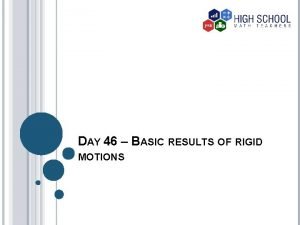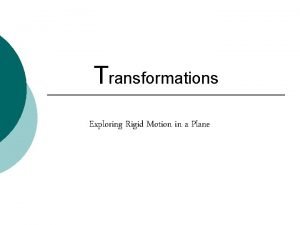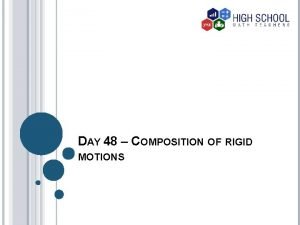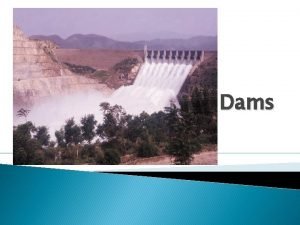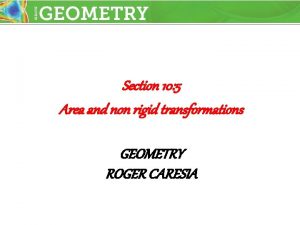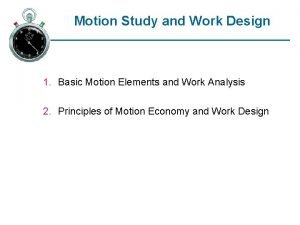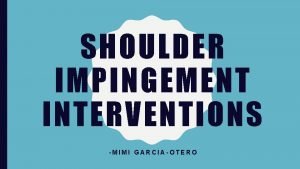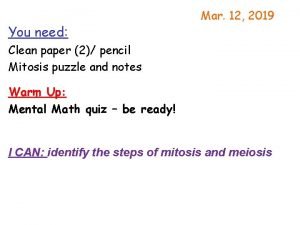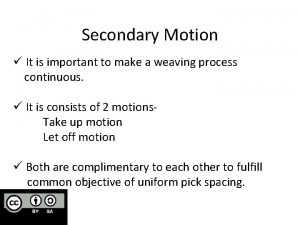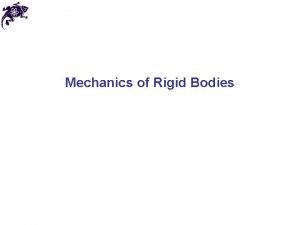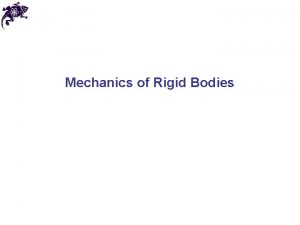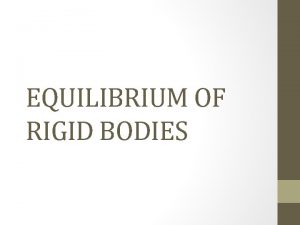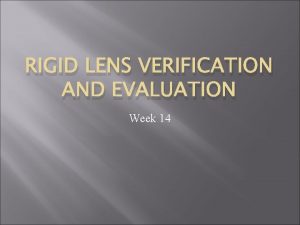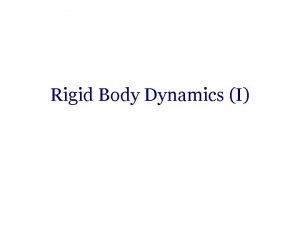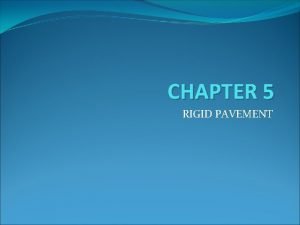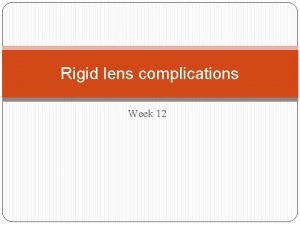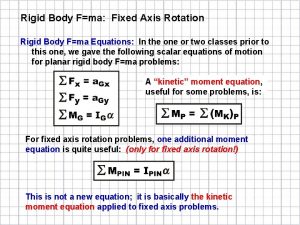Constructions of the Rigid Motions Order of Constructions
















- Slides: 16

Constructions of the Rigid Motions

Order of Constructions � Translation � Reflection � Rotation

Translation Construction Step 2: Set the compass to the length of the vector. Draw a circle at each key point in the figure (In the case of a shape, draw a circle at each vertex)

Translation Construction Step 3: Draw horizontal lines that are parallel with the bottom of the paper from the key points. Also, draw out the horizontal and vertical components of the vector

Translation Construction Step 4: Copy the angle of the vector onto one of the horizontal lines made Copying an Angle Construction Review 1. set compass not too large, make an arc in the angle that we want to copy. 2. with the same size make an arc with excess in the template line 3. set compass length to the size of the arc in the vector (pointy bit on the horizontal component, pencil on the vector). Draw a small arc to mark the intersection point in the template angle 4. draw a line passing through the intersection

Translation Construction Step 5: Copy the angle onto the rest of the key points

Translation Construction Step 6: Redraw figure

Reflection Construction Step 1: Draw a figure and any line near the figure

Reflection Construction Step 2: start at one key point. set pointy bit of compass on this point, pencil bit passed the line in which to reflect by a little bit. Make an arc that intersects this line at 2 places

Reflection Construction Step 3: with this same exact compass size, make two small arcs starting from the two intersection points made on the line in which to reflect. Mark the intersection of the two small arcs

Reflection Construction Step 4: Repeat this process for the other key points

Reflection Construction Step 5: Redraw figure

Rotation Construction This example is done with a 110° Clockwise Step 1: Draw a figure and a point about which to rotate (Don’t make the point too large or you will lose accuracy)

Rotation Construction This example is done with a 110° Clockwise Step 2: start at a key point. Draw a line from this point to the point of rotation. Set the 0° mark of the protractor on the key point and mark the spot for 110°. Finally, measure the length from the key point to the point of rotation and go that same length towards the mark made by the protractor

Rotation Construction This example is done with a 110° Clockwise Step 3: Repeat this process for the other key points. (Having a small point of rotation will increase accuracy when marking the angle measure or measuring the distance)

Rotation Construction Step 4: Redraw figure This example is done with a 110° Clockwise
 Basic rigid motions
Basic rigid motions Dot translater
Dot translater Rigid motion
Rigid motion Rigid and non rigid dams
Rigid and non rigid dams Irrational exponential function
Irrational exponential function 10-5 area and nonrigid transformations
10-5 area and nonrigid transformations 1st order 2nd order 3rd order neurons
1st order 2nd order 3rd order neurons Flow of a debate
Flow of a debate Motion study involves analysis of
Motion study involves analysis of Agitation in size separation
Agitation in size separation Song leader hand signals
Song leader hand signals True motions
True motions Ocean motions
Ocean motions Alphafriends with motions
Alphafriends with motions Mitosis hand motions
Mitosis hand motions Let off motion
Let off motion Forays company
Forays company
